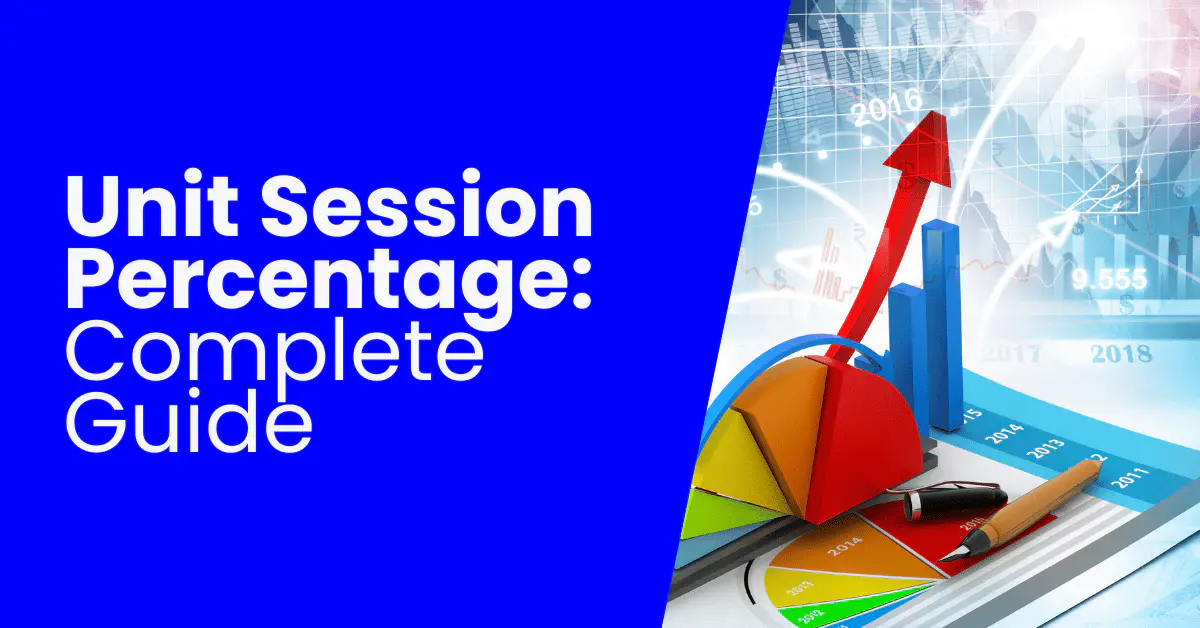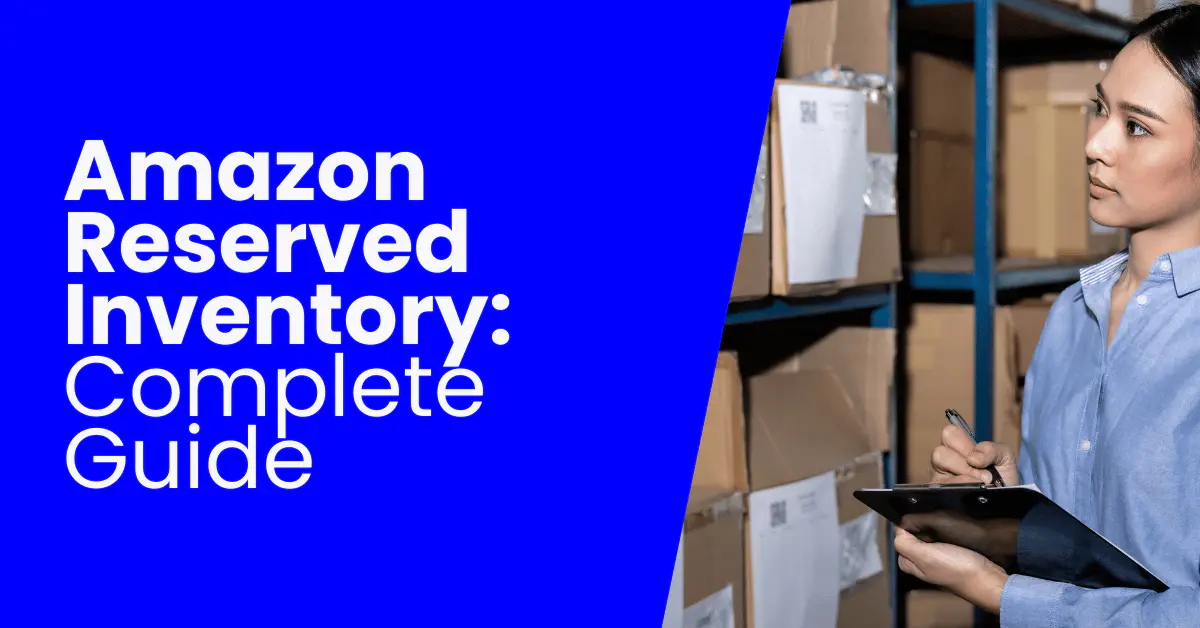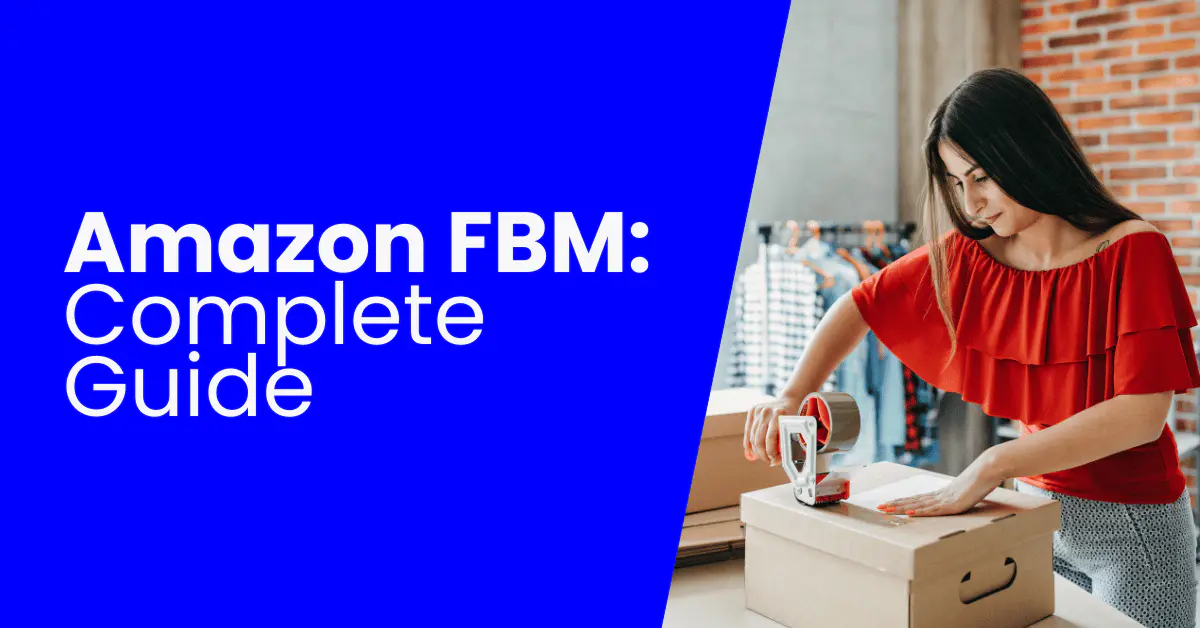Amazon Advertising Strategy The COMPLETE Guide [EXAMPLES]
Last Updated on July 13, 2025 by Tanner Rankin
Key Takeaways:
An Amazon Advertising Strategy is the first step Amazon Sellers take to grow their sales along with Amazon SEO, Email Marketing, Social Media Marketing & Amazon Influencers.
Amazon Advertising has platforms that accommodate sellers with a budget as low as $1 a day in Sponsored Products, Sponsored Brands and Display Ads to over $35,000 monthly in the DSP. (Dconsemand Side Platform)
Table of Contents
In over 10 years as an eCommerce Fractional CMO, Amazon Consultant, and eCommerce Consultant, not to mention CEO, I’ve seen just about every mistake and the lessons from them. That means you get all the learnings without the scars.
Whether you’re selling Amazon FBA, Amazon B2B, Merchant Fulfilled or Seller Fulfilled Prime through Seller Central or Vendor Central, you would agree that there are lots of costly mistakes to be made by having the wrong Amazon advertising strategy.
These mistakes can put a lot of time and distance between you and selling.
By having a powerful Amazon Advertising strategy you’ll be able to increase Amazon sales and reduce ACoS on Amazon,
You’re going to learn EVERYTHING you need to know and get the EXACT Amazon advertising strategy I use with my clients.
How To Advertise on Amazon
You can advertise on Amazon with your Seller Central account, Vendor Central Account or KDP account.
Seller Central and Vendor Central sellers access the advertising console directly through their Seller Central or Vendor Central accounts.
Kindle Direct Publishing (KDP) sellers advertise on Amazon through the Amazon Advertising Console outlined in the Amazon Advertising Console section.
The process of how to advertise on Amazon is simple.
- Log in to Seller Central or Vendor Central
- Click on Advertising and Select Campaign Manager
- Click the Yellow Create Campaign Button
At this point, you will be presented with options including the types of ads you want to run such as:
- Sponsored Products
- Sponsored Brands
- Sponsored Display
It will look like this:
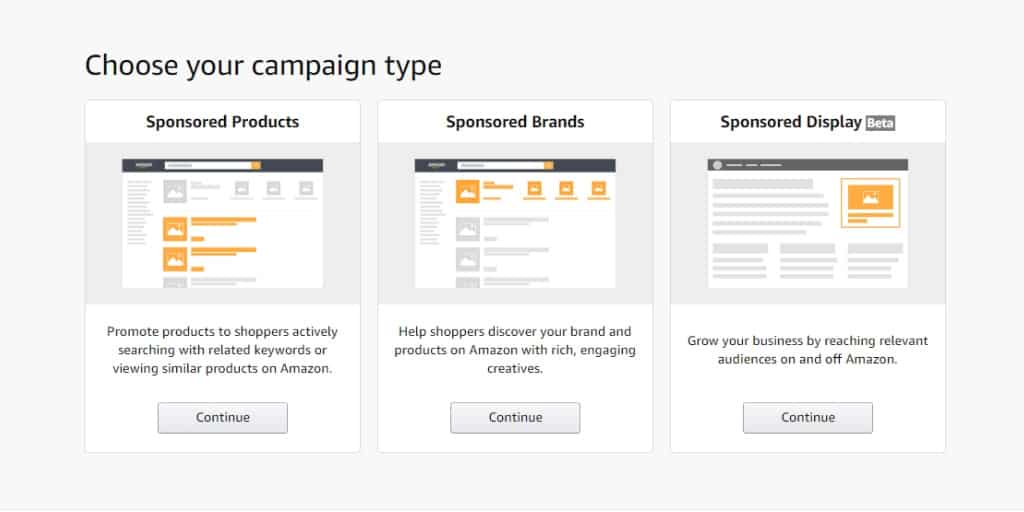
From there, you will be selecting:
- Which products you want to advertise
- Budget
- Bidding strategy
- How to target customers
- Keyword
- Automatic
- Manual
- Broad
- Modified Broad
- Phrase
- Exact
- Broad
- Product
- Product Category
- Keyword
This is where you’re likely asking: “Right, but how do I select each one to get the most sales?”
To make these decisions we need to consider our goals such as:
- Building Awareness
- Driving Sales
Now, of course everyone’s goals are to get sales.
But are you in a position to get sales or do you need to also build awareness to get the most sales?
Not just build awareness that your product and brand exists, rather that your product provides superior value while solving the customers’ problem or fulfilling their desire.
So you need to ask questions like:
- Should we even be advertising yet?
- Is our Amazon listing in the best shape it can be to convert as many customers as possible?
- Did we focus on Amazon Listing Optimization first?
- Do we have Amazon A+ Content to drive conversions?
- Did we focus on Amazon SEO to drive down our ad costs and to be relevant for the ads we want to run?
- Is our Amazon listing in the best shape it can be to convert as many customers as possible?
- Do we have a product that people know they need and now they are just looking for the one with the most reviews and best price that will offer them the best value?
- Do our target customers understand why our product is different and better than the competitors or do they have to click on the listing and read our description, view our images or watch our video to figure that out?
- Can our potential customers understand that just from the product title and featured image?
- Do we have enough reviews to be competitive yet for each type of ad?
- Do we need to work on how to get Amazon reviews?
- Do our target customers understand that we solve their pain point or fulfill their desire?
- Do the customers on Amazon searching for these types of products know they have the problem that we solve?
- Do they know their existing way of solving this problem is inferior to our way and should be considering us instead of the pre-existing, inferior and old way of doing it?
- Do we have the price as well as the quality and quantity of reviews to compete with the existing products at the top of search listings to take away clicks from them?
- Or should we be considering different types of ads? If so, which ones?
This is how to make an Amazon advertising strategy that will improve your Amazon Sales Rank straight from your top-rated Amazon Consulting source.
Amazon Advertising Strategy
In my experience in Amazon Consulting, the best Amazon Advertising Strategy starts like this:
- Identify buyer intent keywords
- Make your listing as good as it possibly can be using Amazon Listing Optimization
- Make sure the keywords that you are targeting appear on your listing front end or back end.
- Make sure your price is competitive.
- Have a system in place to get Amazon reviews as you’re running ads.
- Consistently drive external traffic to your Amazon product listings.
- Build a buzz off of Amazon about your brand & products
From there, it then gets into the finer points of setting up your campaigns and adjusting them.
Let’s look at each component involved in Amazon Advertising.
Should I Use Keyword Targeting or Product Targeting For Amazon Ads?
- Always have keyword targeting campaigns, whether your goal is to drive awareness or sales.
- The types of keywords you select will be different to drive awareness vs. building sales, but you will use keyword campaigns nonetheless.
- Use product targeting campaigns to show your ads on well-known or competitor products that are similar to yours if your potential customers are not aware of your brand or if you are attempting to chip away at your competitors’ sales by introducing customers to your product.
What Keyword Match Type Should I Use For My Amazon Ads?
You have 3 and 1/2 choices.
Broad Match: Amazon will show your ads for customer searches similar to the keyword you’ve entered.
- EXAMPLE: “hose pressure jet attachment” will show your ads for “hose nozzle sprayer for garden”
Modified Broad Match: Amazon will show your ads for customer searches that contain the keyword you modified and similar to the keyword that you did not modify.
- EXAMPLE: “+mens +shoes” will show your ads for “mens shoes” “mens sneakers” “mens shoes size 12” “mens nike sneakers”
Phrase Match: Amazon will show your ads for keywords added on before and after the keyword you’ve entered.
- EXAMPLE:”hose pressure jet attachment” will show your ads for “garden hose pressure jet attachment wand”
Exact Match: Amazon will show your ads ONLY when a customer searches for EXACTLY what you’ve entered.
- EXAMPLE: “hose pressure jet attachment” will show your ads for “hose pressure jet attachment”
That said, you want to use a combination of all of these.
If You Are Just Getting Started:
- Take the keywords from the keyword research you’ve done and setup an ad group for each.
- After a week or so, view the report to see which keywords from the Broad Match campaign you’ve been converting on.
- Add them as a negative for the broad match campaign and add them to your phrase match and exact match campaigns.
If You Are Good At Keyword Research:
- Run one ad group with exact match and phrase match keywords in it.
- Then, regularly view your reports to identify new keyword opportunities from the Search Terms
What Is The Difference Between Keywords and Search Terms?
This is the easiest way I’ve found to think about this:
Keywords are topics to make sure you show up for the terms customers type into the Amazon search engine.
Search Terms are the literal EXACT term that the customer typed into the Amazon search engine and you were triggered to show up for that search term by the keyword you selected.
This is because customers don’t use search engines with proper grammar or syntax.
Generally, they’ll type loose approximations in broken sentence structure to try and find what they need.
It gets more convoluted if they are using voice-search.
This is where Amazons’ a9 algorithm comes into play to interpret the “search terms” and tether them to “keywords”.
What Are The Best Keywords For Ads?
The best keywords for Amazon ads are buyer intent keywords.
Think about how you search.
When you want to learn what options there are out there to solve the problem you have or to fulfill your desire, you search for things like:
- Pontoon Boat Accessories
- Pontoon Boat Cover
But if you’ve already figured out what you want and now you want to find the right one for your needs, you search for things like:
- Propane Pontoon Boat Grill With Railing Attachment Mount
- 18 Ft Pontoon Boat Cover Trailerable Blue
Should I Exclude Broad Keywords From My Amazon Advertising Strategy?
No, definitely not.
The most common question I get is “what are the best keywords to sell?” and the answer is buyer intent keywords.
But, if you have a complex product, people aren’t aware that your solution exists or you need to build brand awareness, then less targeted broad, research type keywords are exactly what you need.
A proper Amazon Advertising Campaign should have a mix of both.
Should I Target Competitor Products With My Amazon Advertising Strategy?
Yes, in my experience as an Amazon Seller Consultant, you should allocate at least a small portion of your budget to attempt to capitalize on your competitors’ traction in 2 ways.
- Create a Product Targeting Sponsored Product Listing Campaign that targets your competitors’ ASIN’s with a low daily budget and a low bid.
- Create a Keyword Targeting Sponsored Product Listing Campaign that targets your competitors branded keywords.
How Do I Get My Competitors Branded Keywords?
Let’s say you sell a competitor to the Stream Deck by Elgato.
- Head to Amazon
- Start typing in “stream deck” but don’t hit enter in the search field
- Make note of the keywords that show up in the suggested search terms section
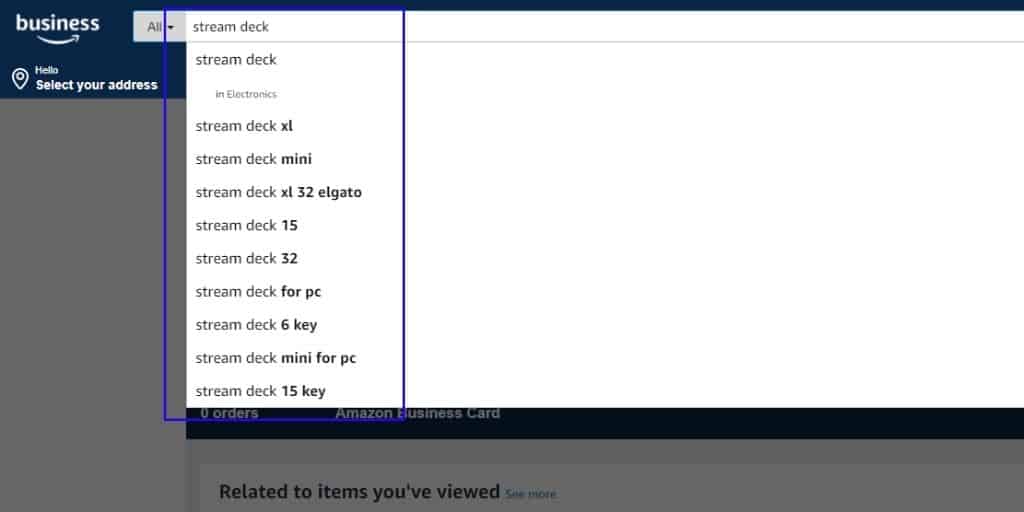
These are keywords that your customers use to search for your competitor.
These are the keywords you want to advertise on to try and chip away at their sales and build brand awareness for your own product.
How Can I Find Keywords For Amazon Ads?
I mentioned earlier that Helium 10, Seller Labs or Jungle Scout have tools that will show you what keywords your competitors are indexed for and are running ads on.
You’ll get lists you can export like this:
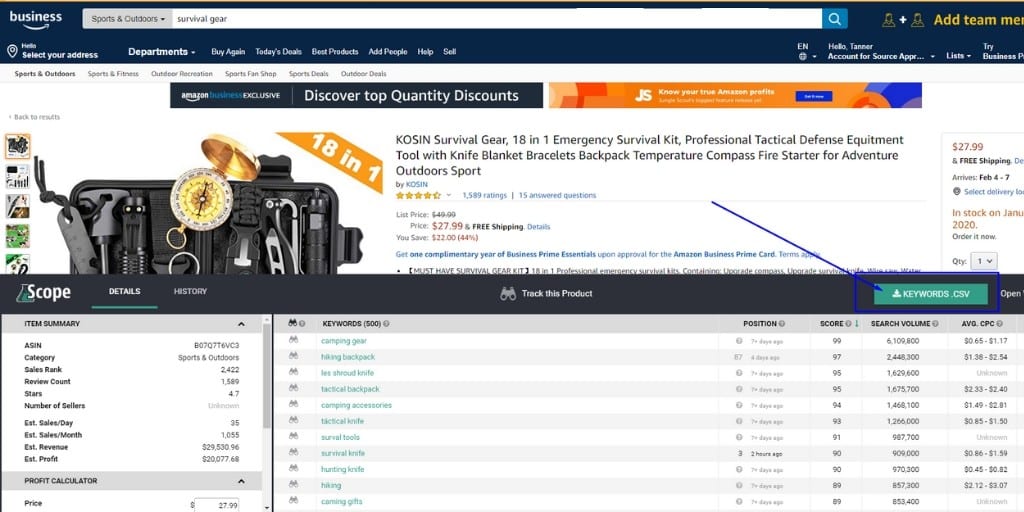
Those are great, but in the lists that you get, they have buyer intent keywords and research keywords.
But did you know that Amazon itself will give you buyer intent keywords?
Here’s how it works:
Step 1) Head to Amazon.com and start typing in a keyword that you think customers would use to find your product.
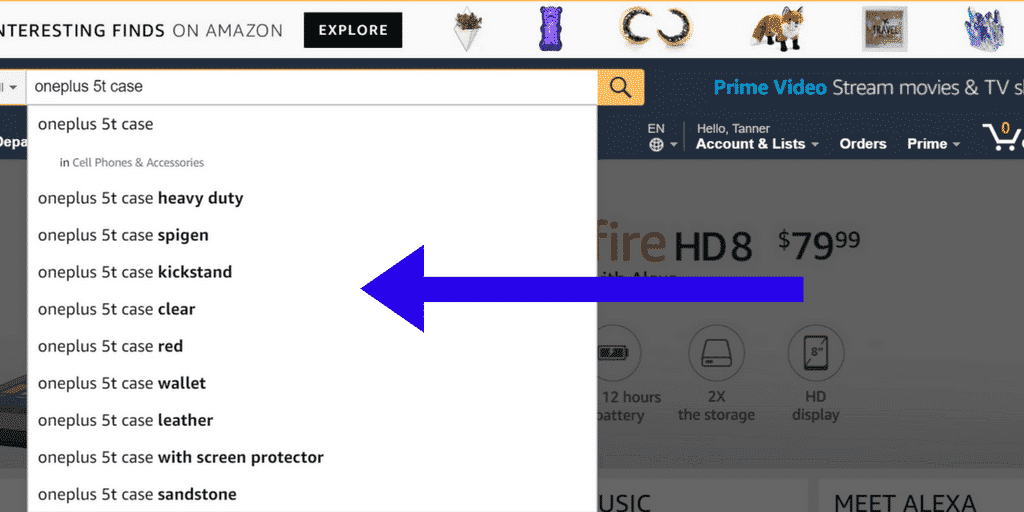
See the drop-down list with those keywords?
Those are buyer intent keywords.
Those are the keywords that Amazon has identified that:
- Get a lot of searches
- Get a lot of sales
Step 2) Repeat that process for every single keyword you believe people may type in to find a product like yours and then make a list.
Don’t have that much time?
Keyword Tool Dominator makes this quicker & easier.
Here is how it works:
Step 1) Enter the keyword that you want to discover buyer intent keywords for.
You will get a list like this:
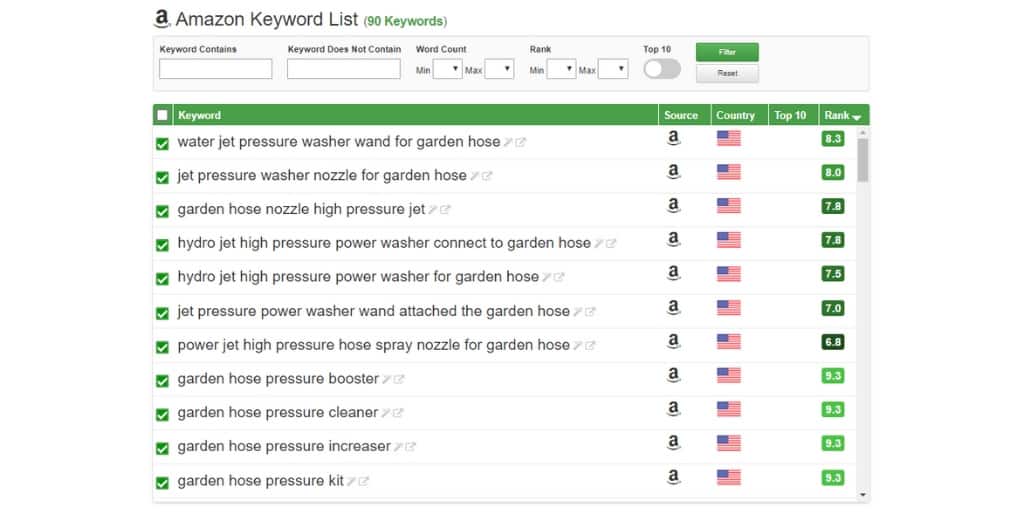
That’s 90 keywords you wouldn’t have thought of in 1 second!
Step 2) Repeat that process for keywords you believe customers would type in to find and buy your product.
You’re done.
It really is that simple.
How to Structure Amazon Advertising Campaigns
You may have 1 product or you may have 20,000+ products.
In my experience, the closer you can get to giving each product it’s own campaign, the more impressions you will get.
This works because it consolidates the types of keywords or products that it targets, and this tends to produce the most impressions.
You can separate out colors, sizes, various other factors in Ad Groups.
Here is an example Amazon advertising ad campaign setup:
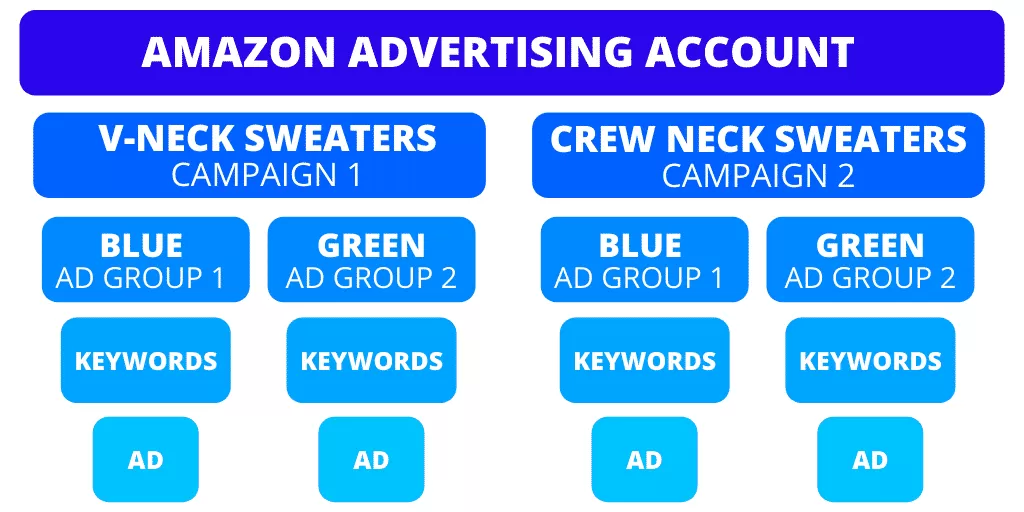
What Should I Name My Amazon Advertising Campaigns?
Name schemes will be entirely different based on what you’re selling and how many items you’re selling.
I like to use this name scheme:
- NAME OF PRODUCT – TYPE OF AD
- EXAMPLE: GALVANIZED ANTIQUE BUCKETS – SPONSORED PRODUCTS
How To Structure Amazon Advertising Ad Groups
The easiest way I’ve found to think about Ad Groups in Amazon Advertising are these are where you target your customers.
You have 2 main objectives when setting up your Ad Groups.
- Create as many ad groups as it takes to isolate out particular unique identifiers that customers are looking for. (EXAMPLE: You don’t want to show blue t-shirt ads to people who are looking for green t shirts.)
- Consolidate the relevancy of your ad groups to get as many impressions for the most cost-effective cost per click. (EXAMPLE: The same keywords that do a good job selling a v-neck t-shirt will be quite a bit different than a crew-neck t-shirt.)
What Should I Name My Amazon Advertising Ad Groups?
As mentioned above, these are entirely dependent on what makes sense for you.
I like to use this name scheme:
- NAME OF KEY DIFFERENTIATOR
- EXAMPLE: LARGE GALVANIZED ANTIQUE BUCKETS
- EXAMPLE: SMALL GALVANIZED ANTIQUE BUCKETS
Which Amazon Advertising Bidding Strategy Is Best?
You have 3 choices for bidding strategies.
Here is how Amazon describes them:
We’ll lower your bids in real-time when your ad may be less likely to convert to a sale. Any campaigns created before January 2019 used this setting.
When should I use this?: Use this when you haven’t dialed in your ACoS on Amazon yet.
Dynamic bids – up and down
We’ll raise your bids (by a maximum of 100%) in real time when your ad may be more likely to convert to a sale, and lower your bids when less likely to convert to a sale.
When should I use this?: Use this when you are happy with your ACoS on Amazon.
Fixed bids
We’ll use your exact bid and any manual adjustments you set, and won’t change your bids based on likelihood of a sale.
When should I use this?: You almost never see this. Use this if you don’t have many products to manage and you know the exact number of the cost to acquire a customer that you are not willing to go above.
Should I Use Automatic or Manual Keyword Targeting For Amazon Ads?
You should work to the point where you’re only using manual keyword targeting on your ads.
This is because it means you know your customer and you are only advertising on keywords that you know your customers are using to make a purchase.
That said if you aren’t familiar with keyword research yet or are selling products where you do not know your customer as well, do this:
- Start with an automatic keyword targeting campaign
- Run it for a month or longer
- During that month, add nonsense or irrelevant keywords to your Negative Keywords so your ads do not run on them.
- Make note of what keywords that make sense that you are converting on or want to convert on.
- Add those keywords to your Manual campaign as:
- Broad
- Phrase
- Exact
When Should I Use Automatic Targeting For Amazon Ads?
You use your Automatic campaigns as a tool to discover what keywords you should be running ads on.
After you’re in the ballpark, your Broad match campaign then becomes that tool for you.
After you’re really dialed in, you typically only run Phrase and Exact match campaigns.
It is worth noting 2 important points:
- You need a mechanism in place to discover new keywords that people are searching for so you should be using keyword tools to identify them year-round.
- To help with this, you would run a Broad match campaign from time to time to discover new keywords that people are searching for as search patterns change over time on Amazon.
Why Am I Not Getting Impressions On My Ads?
Amazon will show your ads if it thinks you will make a sale, regardless of you trying to deal with Amazon Seller Support to ask for your ads to be shown more.
This is often the most jarring part about advertising on Amazon for sellers.
Even if you’ve selected keywords and are willing to pay for the clicks, it doesn’t mean Amazon will show your ads.
Think about that.
You’ve spent a lot of valuable time finding the best keywords to convert customers.
You’ve set up your Amazon advertising ad campaigns and even set your bids to be higher than the suggested bids.
Then, you don’t get very many impressions.
Even worse?
You get the-dreaded – in the impressions column, meaning you have NO impressions.
This happens because Amazon doesn’t think you are relevant and will not result in a sale.
This all boils down to Amazon ad relevancy.
So what do you do?
What Should I Do If I Am Not Getting Impressions On My Ads?
- Make sure the exact keywords you are running ads on are on the front end and back end of your Amazon listing.
- Increase your bids.
- Lower your price temporarily, run a sale. — You need to become more price-competitive to earn the opportunity to get seen.
- You need to drive off Amazon traffic to Amazon
- Amazon rewards you for this with visibility
- Leverage Amazon Influencers
- Build the buzz about your brand online
How Can I Reduce My ACoS So I Can Spend Less On Ads?
I take a very deep dive on how to reduce ACoS on Amazon but in short, here is what you will need to work on:
- Amazon Ads Targeting
- Cut non-profitable keywords or reduce their bids by 35% – 50%.
- Find more profitable buyer-intent keywords
- Work to increase your relevancy for high buyer-intent keywords.
- Amazon Influencers
- Use tools like Referazon to quickly find and work with the right Amazon Influencer for your brand or retailer.
- Amazon Product Titles
- Write shorter, more benefit-driven keywords under 80 characters so they’re not cut off on mobile devices.
- Amazon Product Bullet Points & Product Descriptions
- The most important skill to master is sales copywriting. You need to become good at writing product descriptions that convert customers and the skill is called sales copywriting.
- Amazon Product Imagery
- Revisit your product imagery to sell more effectively by:
- Answering Questions
- Handling Objections
- Increasing Perceived Value
- Highlighting Competitive Advantages
- Revisit your product imagery to sell more effectively by:
- Amazon A+ Content
- Read this article on how to create Amazon A+ content that converts sales: Amazon A+ Content The COMPLETE Guide
- Amazon Reviews
- If you’re having trouble getting Amazon reviews, read this: How To Get Amazon Reviews
Amazon Advertising Console
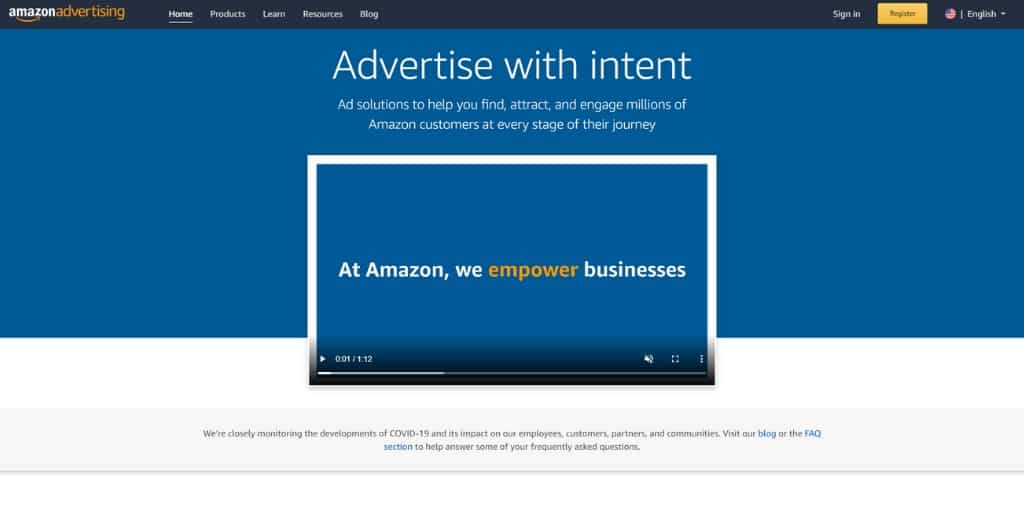
Amazon Advertising Console is Amazons equivalent to Facebook Business Manager or Google Ads platform.
It is the interface by which you control all of your Amazon advertising efforts using the various Amazon advertising products.
It used to be called Amazon Marketing Services and was used to tie Amazon Advertising in for brands and retailers who didn’t use Amazon Seller Central or Amazon Vendor Central such as Amazon KDP (Kindle Direct Publishing) & more.
Who can use this? Amazon Seller Central Sellers, Amazon Vendor Central Sellers, KDP Sellers & Off Amazon brands & retailers who want to advertise on Amazon but not sell on Amazon.
When should I use this? If you are an Amazon Seller Central Seller or Amazon Vendor Central, they are rolling it into your existing accounts and you will use it by default for your advertising campaigns.
What types of ads can I run with it? All Amazon advertising products are available in Amazon Advertising Console. They are…
Amazon Sponsored Product Ads
Who can use these?
- Amazon Seller Central Sellers
- Amazon Vendor Central Sellers
When should I use these?
- Drive Sales
- Build Awareness
What are the key benefits?
- They look like organic search results
- They can appear on your competitors’ product listings
- High click-through rates
- High conversions
Where will my ads show up?
Mixed into Organic search results at the:
- Top
- Middle
- Bottom
What do they look like?
Example Product Targeted Sponsored Product Listing Ad: (These appear above the Questions & Answers section on product listings.)
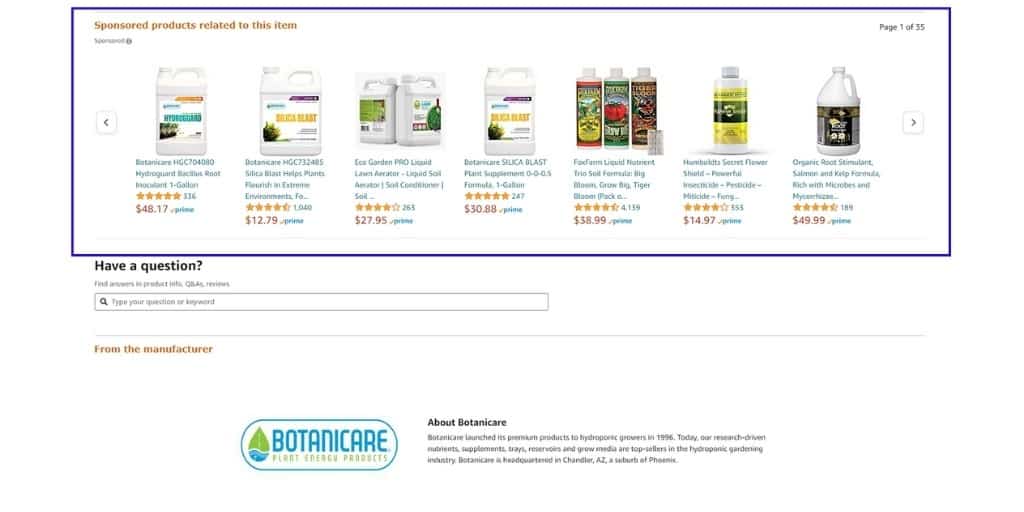
Example Keyword Targeted Sponsored Product Listing Ad: (These appear among organic product search results.)
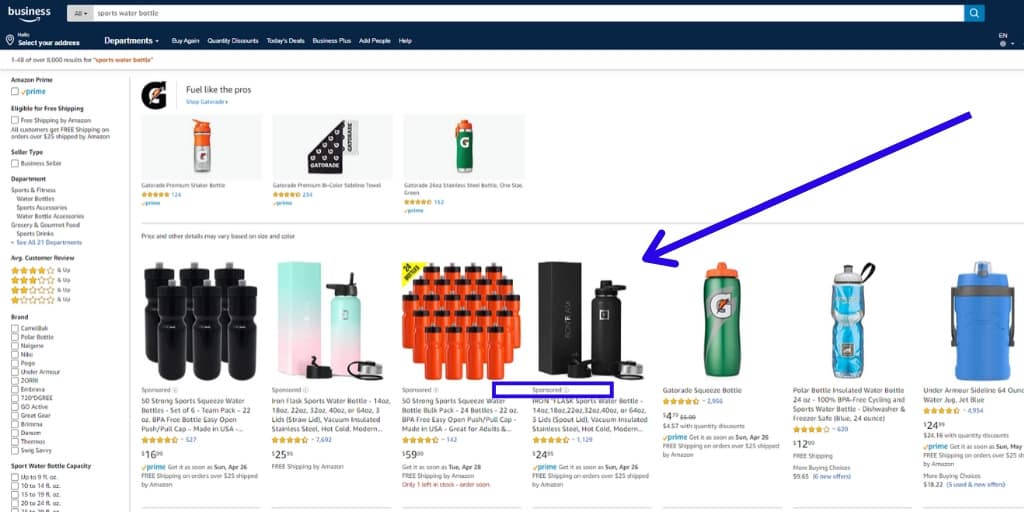
Amazon Sponsored Brands Ads
Who can use these?
- Amazon Seller Central Sellers
- Amazon Vendor Central Sellers
When should I use these?
- Drive Sales
- Build Awareness
What are the key benefits?
- You can write headlines of up to 50 characters.
- This allows you to easily convey benefits or competitive advantages beyond a product title or featured image.
- You can also advertise sales by calling out the savings the customer will receive.
Where will my ads show up?
- Above search results.
What do they look like?
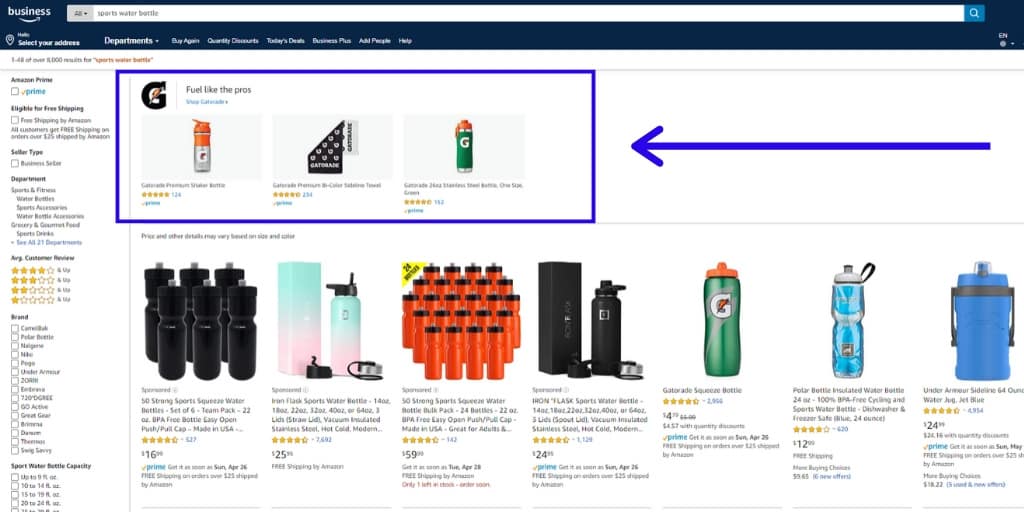
Amazon Sponsored Display Ads
Who can use these?
- Amazon Seller Central Sellers
- Amazon Vendor Central Sellers
When should I use these?
- Retarget Sales
- Build Awareness
What are the key benefits?
- Have beautiful product ads without having to design assets
- Reach customers beyond Amazon
- Bring potential customers who didn’t buy back to your product listing
Where will my ads show up?
- Amazon describes where your ads will show like this:
| Audiences or product targeting selected | Description | Ad placement |
|---|---|---|
| Views* | Engage audiences who viewed the detail pages of your advertised products or similar products within the last 30 days but haven’t yet purchased. | Off Amazon on third-party websites and apps. |
| Interests | Engage audiences whose shopping activities on Amazon demonstrate an interest in product categories related to your promoted product. | On product detail pages, or other product-related pages |
| Products | Target specific products on Amazon that are similar or complementary to your promoted product. | On product detail pages, or other product-related pages |
| Categories | Target a range of product categories on Amazon that are similar or complementary to your promoted product. | On product detail pages, or other product-related pages |
What do they look like?
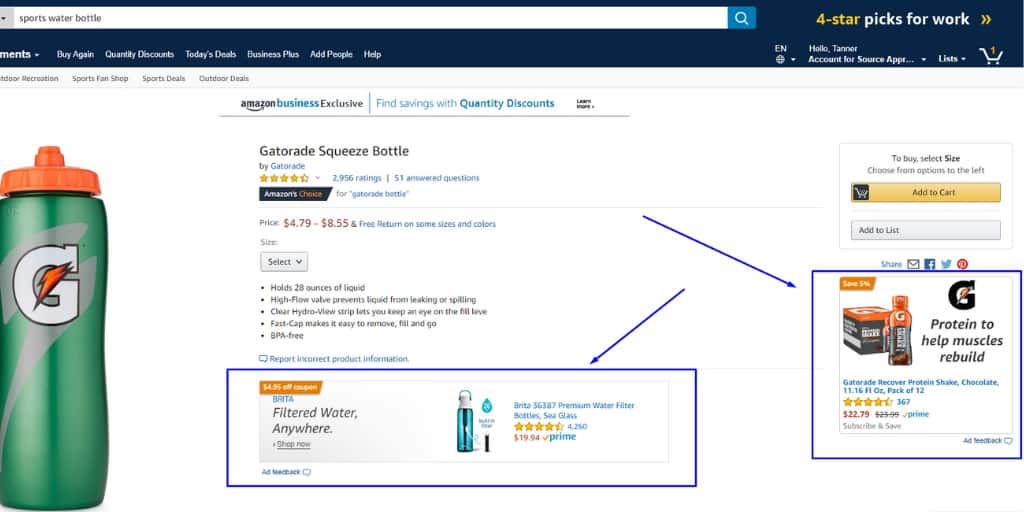
Amazon Sponsored Brands Video Ads
Amazon Sponsored Brands Video Ads allow advertisers to run video ads for their products.
Amazon Sponsored Brands Video Ads are similar to video ads found on other networks such s YouTube, Facebook & more.
How To Run Amazon Sponsored Brands Video Ads
To run Amazon Sponsored Brands Video ads simply head to the Amazon Advertising Console, then create a new Sponsored Brands advertising campaign.
From there, select the video option.
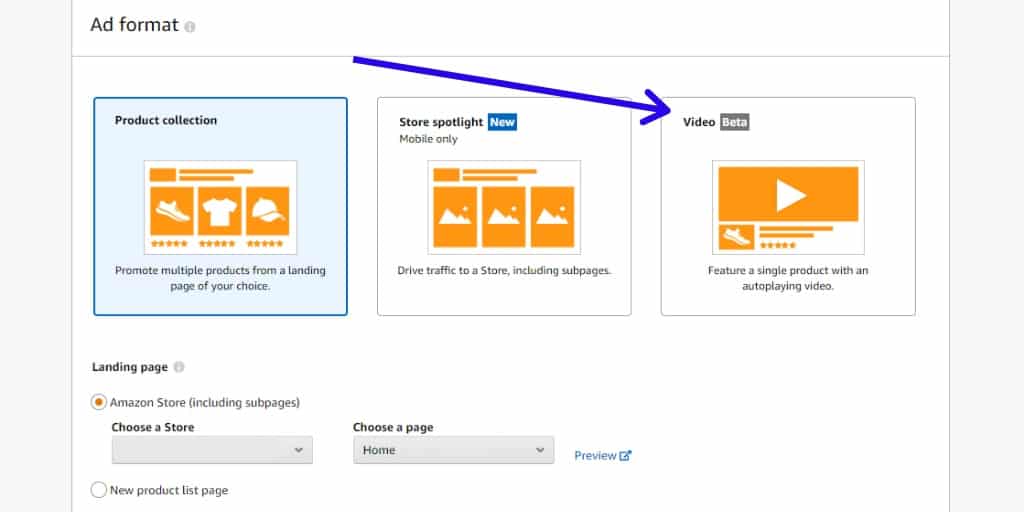
What Makes A Good Amazon Sponsored Brands Video Ad?
- On-screen text: Sponsored brands video ads run without sound by default. So you will want to communicate the key benefits via on-screen text. The customer does have the option to turn sound on.
- Length: 15 – 30 seconds. Keep things brief.
- Gets to the point: Since the ads are so short, show the product right away and get to the point. Do not prioritize fancy lead-ins. This is not a commercial or explainer-video.
- Loop if possible: These videos automatically run in a loop, so optimizing for that format is ideal.
- End with a call to action: Tell the potential customer what you want them to do, ORDER NOW. Show your branding, unique value proposition and tell the user to buy.
- Do not show your website: You are not allowed to customers users off of Amazon so your ad will be rejected if it contains your website.
Who can use these?
- Brand Registered Amazon Seller Central Sellers
- Brand Registered Amazon Vendor Central Sellers
When should I use these?
- Drive Sales
- Build Awareness
What are the key benefits?
- Quickly & easily demonstrate complex products.
- Stand out from a crowded competitive landscape.
- Leverage the benefits of an explainer video, in a bite-size portion.
Where will my ads show up?
- Mixed in with product searches on mobile devices.
- On product detail pages
What do they look like?
Amazon DSP Ads
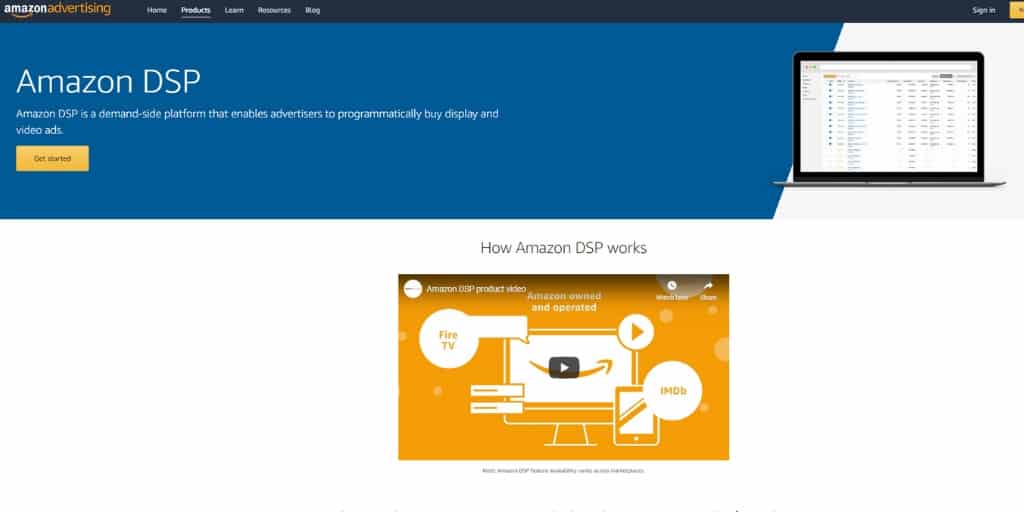
Who can use these?
- Brand owners that sell on Amazon
- Brand owners who do not sell on Amazon
- Brands with a minimum ad spend of $35,000
When should I use these?
- Drive Sales both on and off Amazon
- Build Awareness both on and off Amazon
What are the key benefits?
- You do not have to design ad assets.
- There is no self-service to setup your own ads like Amazon Advertising Console through Seller Central or Vendor Central and they are done through managed partners and agencies. This means, you do not need to target your own ads and it is a “done for you” model.
Where will my ads show up?
- On Amazon across all pages in the marketplace.
- Off of Amazon on partnered Blogs, Media Outlets & Publishers
What do they look like?
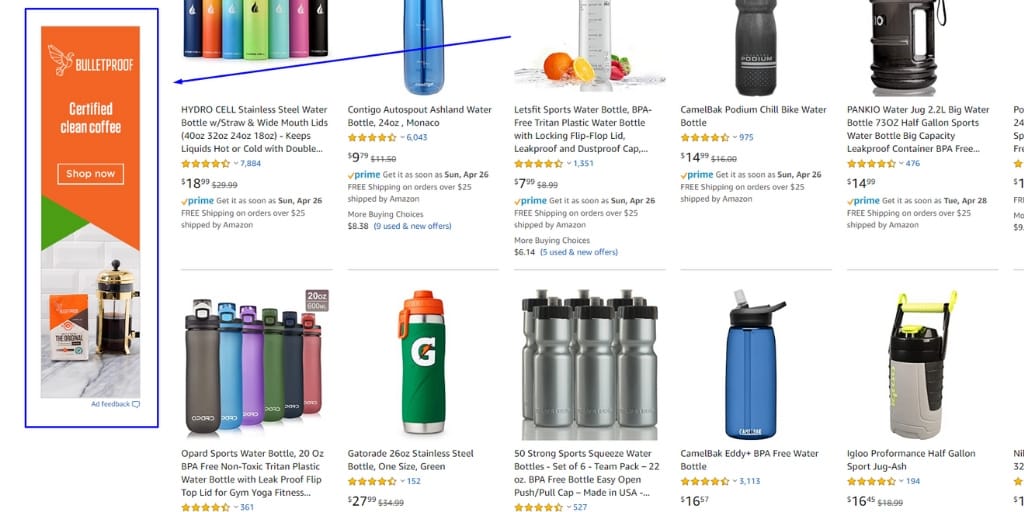
Amazon DSP Video Ads
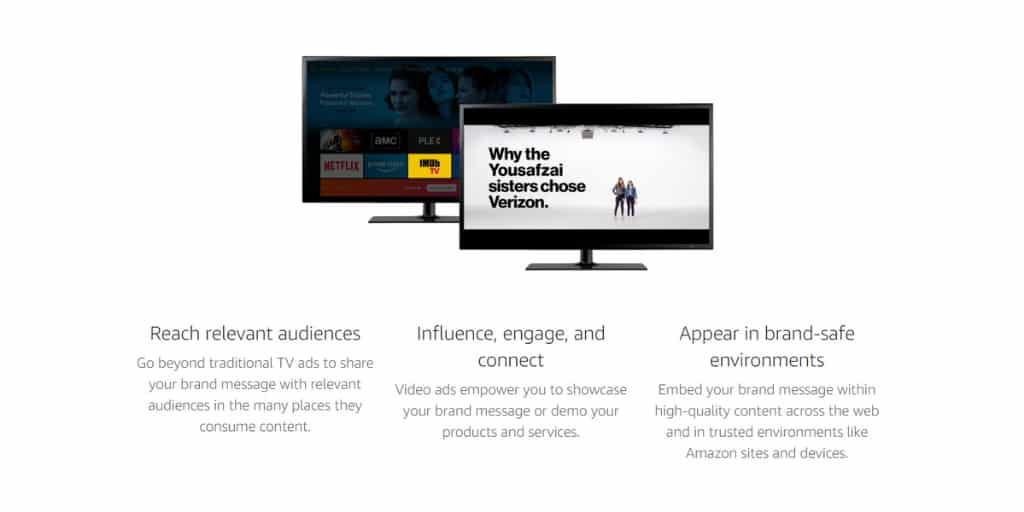
Who can use these?
- Brand owners that sell on Amazon
- Brand owners who do not sell on Amazon
- Brands with a minimum ad spend of $35,000
When should I use these?
- Educate in order to drive sales both on and off Amazon
- Build Awareness both on and off Amazon
What are the key benefits?
- You do not have to design ad assets.
- There is no self-service to setup your own ads like Amazon Advertising Console through Seller Central or Vendor Central and they are done through managed partners and agencies. This means, you do not need to target your own ads and it is a “done for you” model.
Where will my ads show up?
- On Amazon-owned products, services and devices like:
- IMDB TV
- Fire TV
- Kindle Devices
- In-stream and Out-stream
- in-stream: During the middle of video content or video breaks
- out-stream: Before & after video content and independently
- In-stream and Out-stream
- On the Amazon Marketplace
What do they look like?
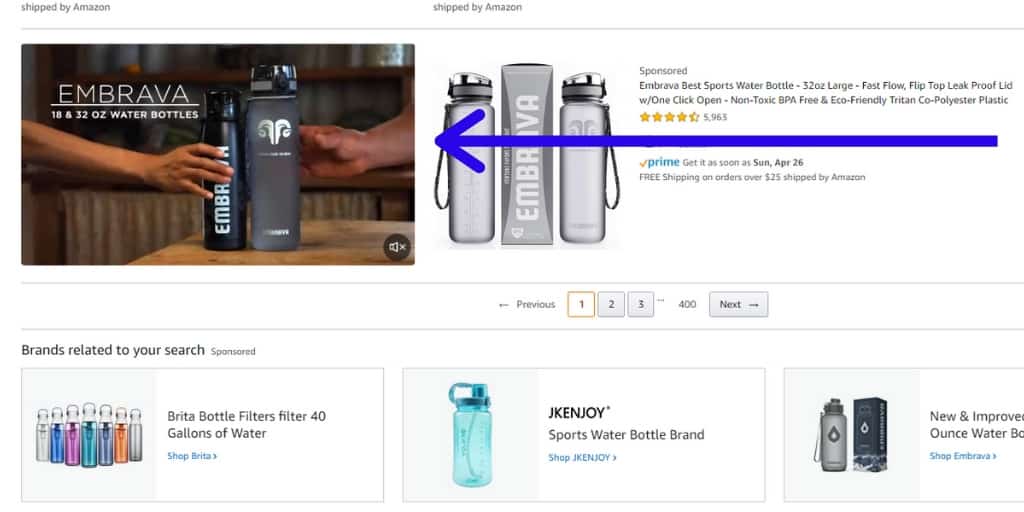
Amazon DSP Custom Ads
Who can use these?
- Brands working with Amazon’s Ad Consultants
- They do require a minimum spend, however, the amount is not public knowledge.
When should I use these?
- Use these to have a holistic approach to create unique ads for every step of the sales funnel.
- Awareness
- Interest
- Consideration
- Conversion
- Retention
- Referral
What are the key benefits?
- Have ads that are truly unique, using a combination of all of the ads talked about here without the constraints of formats that blend in with your competition.
Where will my ads show up?
- Everywhere mentioned previously.
- On and off of Amazon
What do they look like?
- These are images, videos and text that are unique and can appear in any combination of layout.
Amazon Attribution
As a consultant for Amazon I can tell you that there aren’t many Amazon Sellers only advertising on Amazon anymore.
Minimum viable effort for any Amazon advertising strategy involves sending traffic from off of Amazon onto Amazon in addition to your on Amazon efforts.
To do this, you will need to measure which channels are working to drive your Amazon sales.
This is where Amazon Attribution comes in.
Amazon attribution allows brands to measure the advertising traffic they are sending from off Amazon channels onto Amazon.
These channels include:
- Google Ads
- Facebook Ads
- Pinterest Ads
- Twitter Ads
- Native Ads
- & More
Who can use this?
- Amazon Sellers who own a Brand that are part of the Amazon Brand Registry.
When should I use this?
- When running ads from off of Amazon platforms to send traffic to your Amazon listings.
What are the key benefits?
- Know what off Amazon advertising efforts drive results.
Frequently Asked Questions
Stop guessing with inexperienced in-house teams or renting results from agencies & freelancers. Start owning your growth.
Your teams drift into chaos when they operate in silos. You need a Marketing Operating System to govern them.
Whether you need an Amazon Consultant to protect margins, an eCommerce Consultant to architect your roadmap, or a Fractional CMO for eCommerce to orchestrate the execution, I install the Brand Source OS—your single source of truth for AI, strategy, and alignment.
Get a quick free consultation.

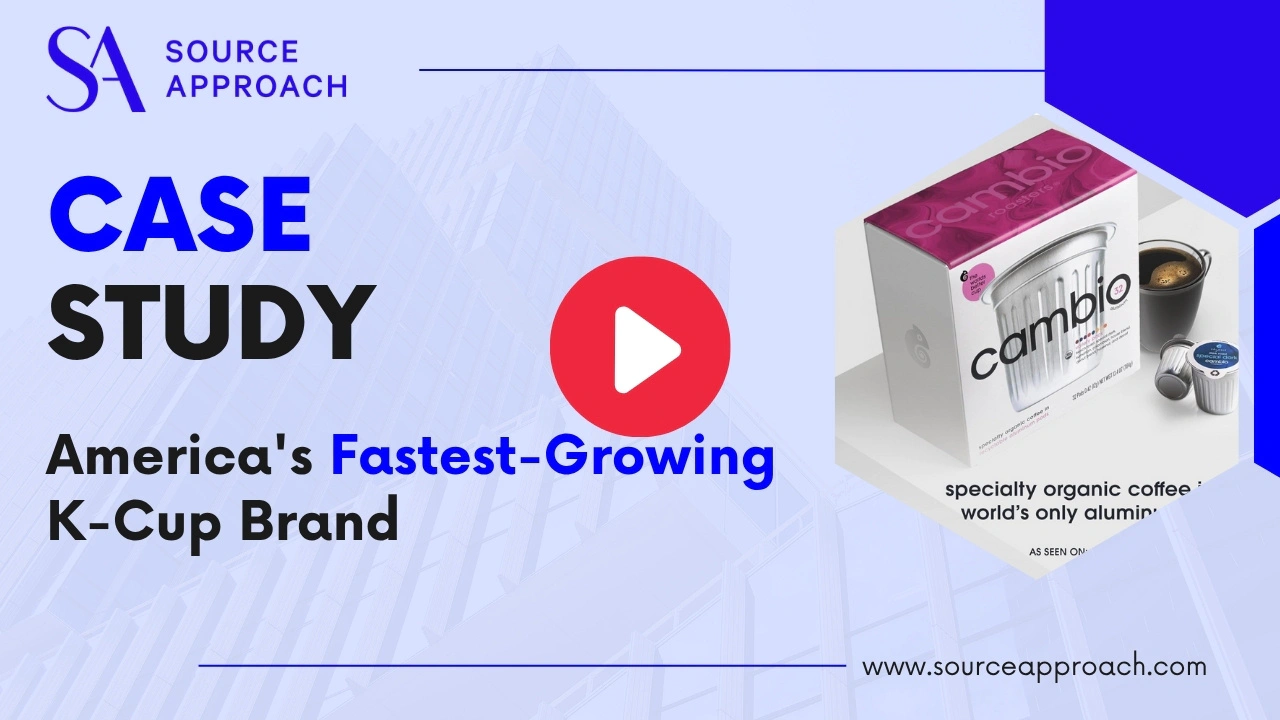
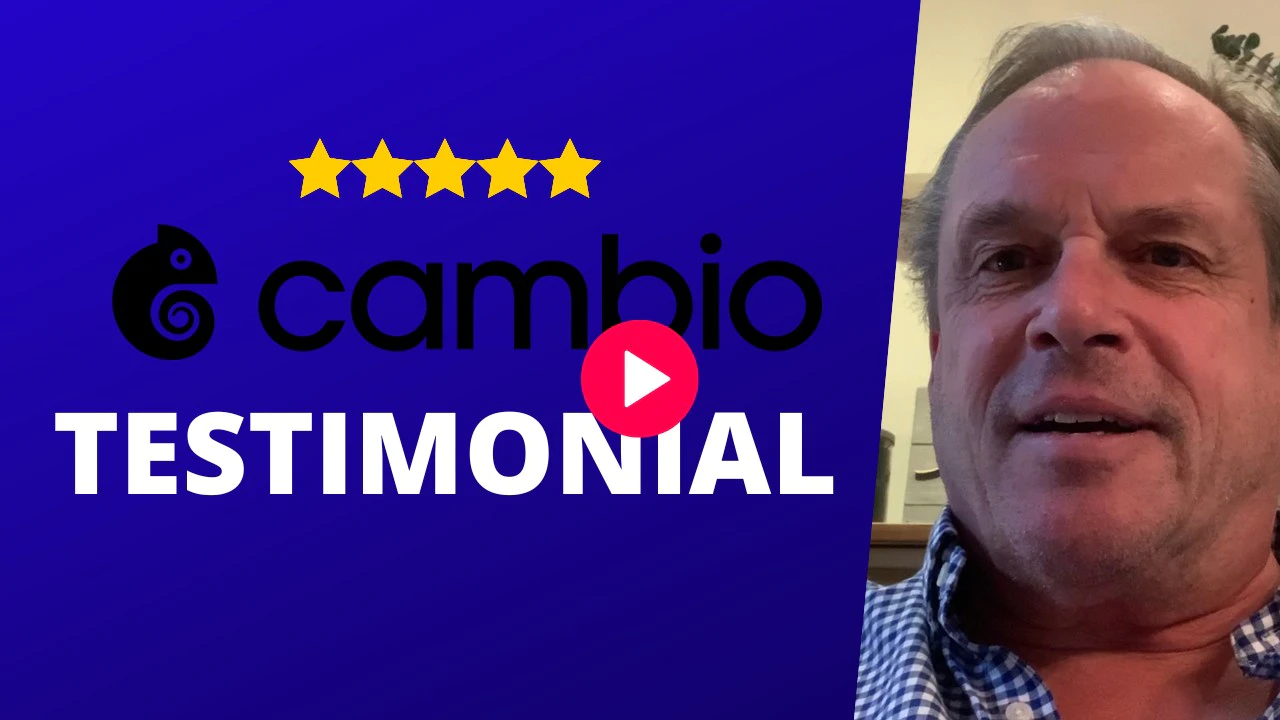
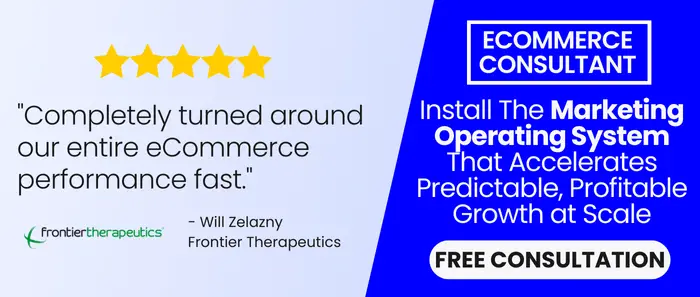
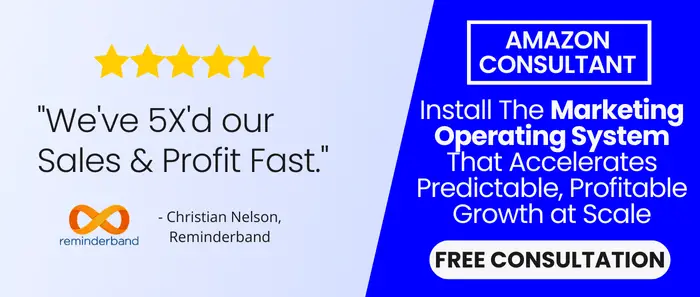

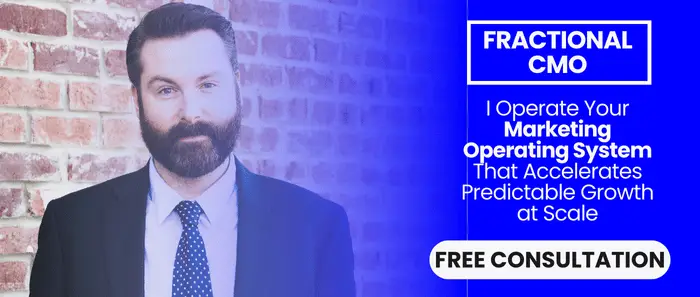
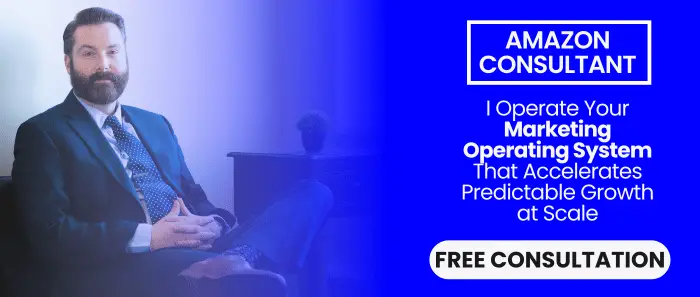
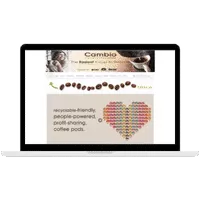

![How To Drive External Traffic To Amazon Listings [GUIDE]](https://www.sourceapproach.com/wp-content/uploads/2025/07/How-To-Drive-External-Traffic-To-Amazon-Featured-Image-The-Source-Approach-Amazon-Consultant-eCommerce-Consultant-Fractional-CMO.png)
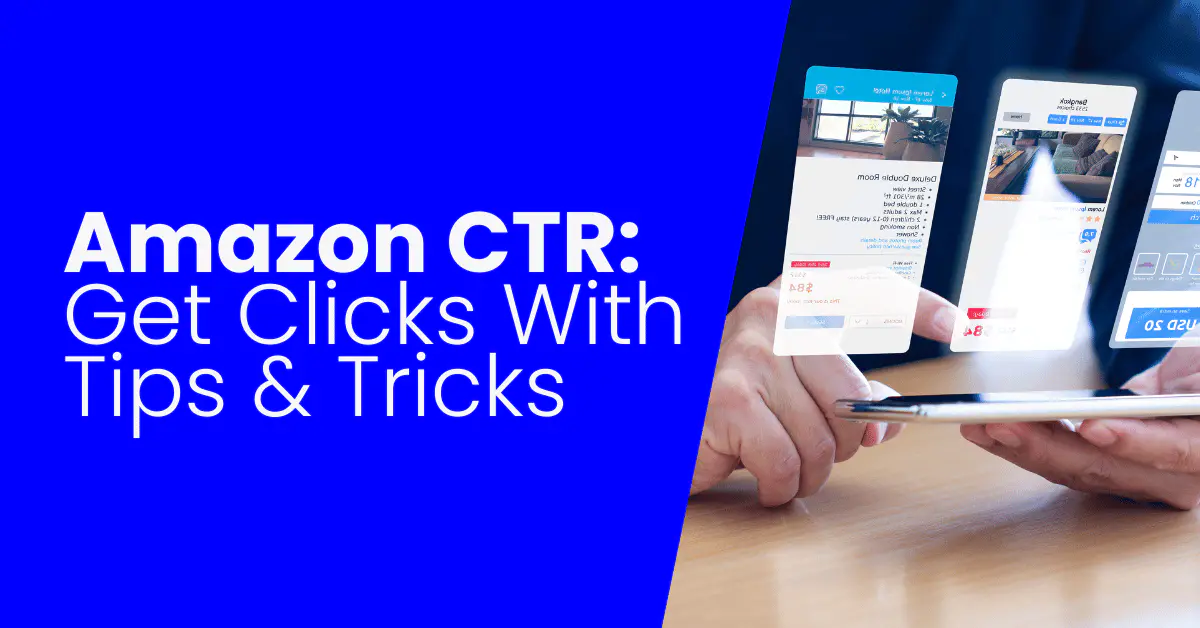
![How to Switch From FBA to FBM [Step By Step]](https://www.sourceapproach.com/wp-content/uploads/2025/07/How-to-Switch-From-FBA-to-FBM-The-Source-Approach-Amazon-Consultant-eCommerce-Consultant-Fractional-CMO.png)
